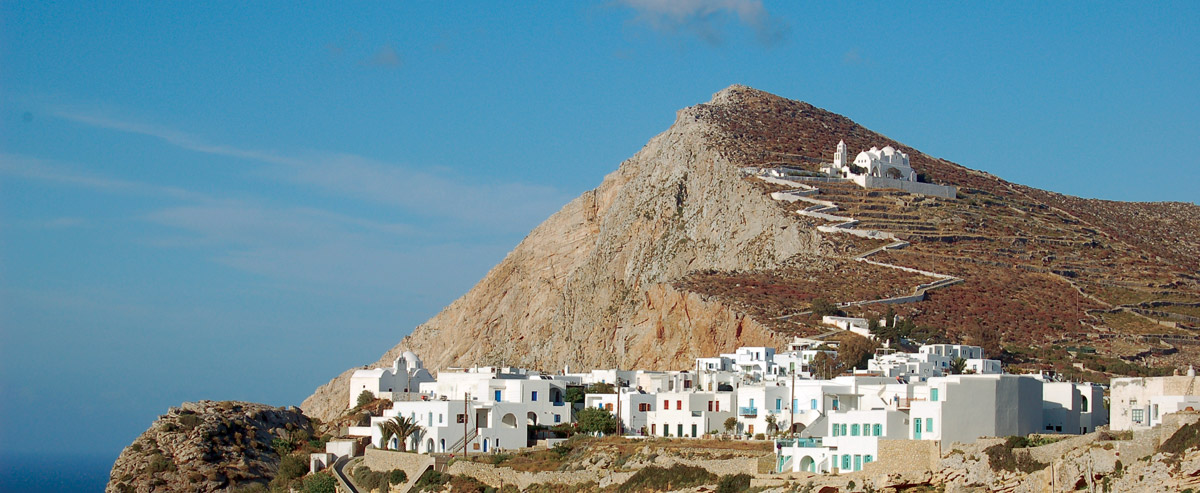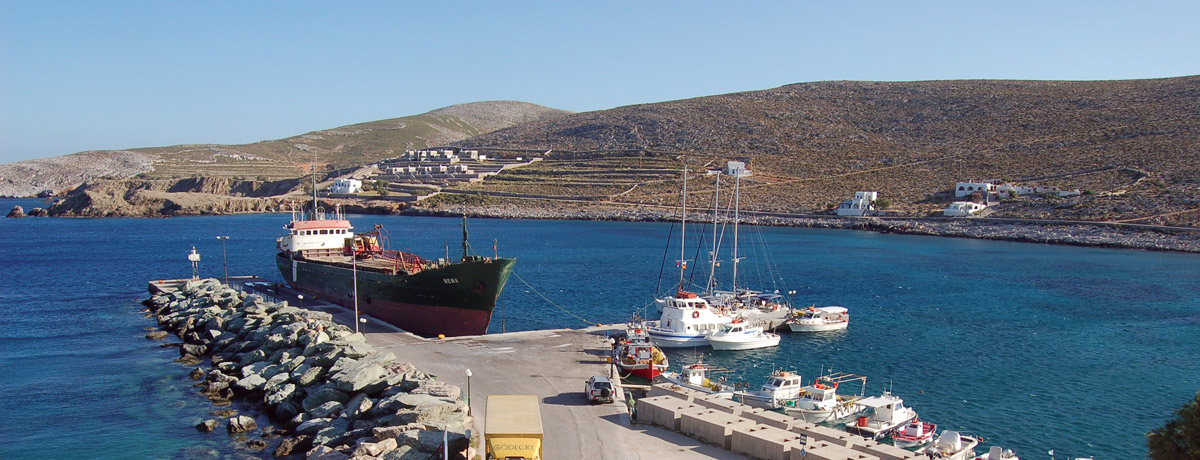
The name of Folégandros derives from a phoenician word which means “Rocky Land”. According to others however, the island was named by the Cretan colonists led here by Folégandros, the son of king Mínoa. Last, the ancient geographer Strávon names the island in his scriptures “Sidireíin” (= iron island), because its terrain is rough.
The island is inhabited since 3000 BC. During the Minoan Era, Cretans colonized the island and later came Dorians from Thíra (Santoríni). In 425 BC. it is reported that Folégandros was part of the Athenian Allience. Following that, the island went to the sovereignty of the Macedonians (3rd century BC.), the Ptolemies (1st century BC.) and last the Romans, who used it as an exile for political prisoners.
The citadel of the island was situated on Palaiókastro position, NE of Chóra and on top of a hill, where one can still see fragments of vases and ruins of buildings. Here lies today the most beautiful church of the island, Panagía (Dormition of Mary), which is part of the ancient walls (in its place, in antiquity, the temple of god Apollo and goddess Ártemis (Diana) was built. Some of its building parts are situated today in the yard of the church). Further down, close to the cemetery, there are ruins of the citadel from the 4th century BC.
In the 12th century AD, the island together with the rest of the Cyclades went under the Venetian rule. Between the 13th and the 16th century, it belongs to the Duchy of Náxos. During that time, it suffered continuously from pirate raids, again just like the rest of the Cyclades. In 1715, the Turkish admiral Tzanoúm Hótza, conquered the island and “killed, enslaved, plundered and left nothing but wails”, according to a local story.
After the liberation of Hellas from the Turkish oppression, the island was integrated into the Hellenic state and later, many of the islanders migrated to Egypt, Constantinople and Athens. Many of them excel themselves in the arts and literature, built fortunes and send back to their families goods and money.
Folégandros island has a wild beauty, with rocky, steep landscapes and amazing views to the Aegean. Chóra is the capital of the island and is separated in two parts, the more recent one and the region of the Castle, which was built by Marco Sanudo and is very picturesque. The castle is of same type as the other castles in the Cyclades, with the walls of the joined houses around forming its walls (two entrances still remain). Actually on one side, the houses are built exactly on the edge of a vertical cliff and if you go out on to the balcony of one of those houses, it feels as if you are flying!

Karavostásis is the main harbour of Folégandros and the haven of its Chóra. Also, it is probably the most dangerous harbour in the Aegean. It is small, narrow, with minimal space for a berth. All around, the bay is surrounded by hills with steep sides which the winds use as a slide, pick up speed and when they reach their maximum acceleration, hit on our poor vessel. Once, I was a witness to a captain of the local f/b who was trying to dock the ship for 45 minutes!

